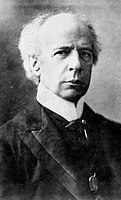Canadian federal election, 1917
|
|
|||||||||||||||||||||||||||||||||||||||||||||||
|
|||||||||||||||||||||||||||||||||||||||||||||||
|
|||||||||||||||||||||||||||||||||||||||||||||||
|
|
|||||||||||||||||||||||||||||||||||||||||||||||
|
|||||||||||||||||||||||||||||||||||||||||||||||
Robert Borden
Government (Unionist)
Robert Borden
Government (Unionist)
The 1917 Canadian federal election (sometimes referred to as the khaki election) was held on December 17, 1917, to elect members of the Canadian House of Commons of the 13th Parliament of Canada. Described by historian Michael Bliss as the "most bitter election in Canadian history", it was fought mainly over the issue of conscription (see Conscription Crisis of 1917). The election resulted in Prime Minister Sir Robert Borden's Unionist government elected with a strong majority and the largest percentage of the popular vote for any party in Canadian history.
The previous election had been held in 1911 and was won by Borden's Conservatives. Under the law, Canada should have had an election in 1916. However, citing the emergency of the First World War, the government postponed the election largely in hope that a coalition government could be formed, as existed in Britain.
...
Wikipedia



